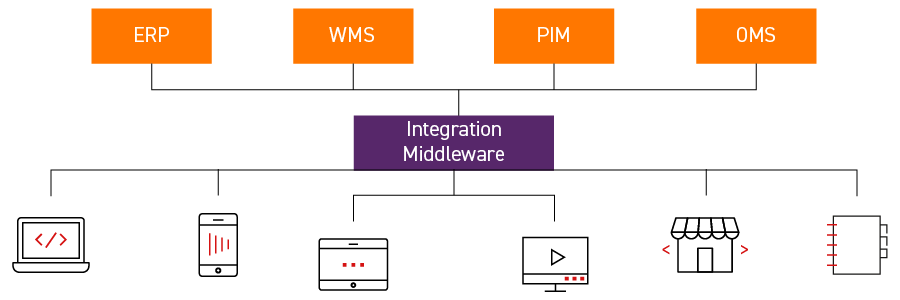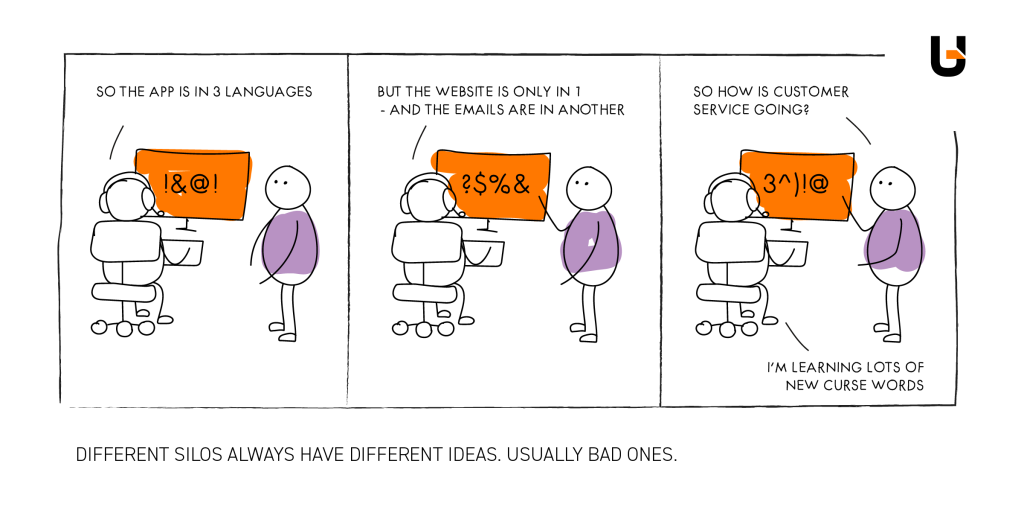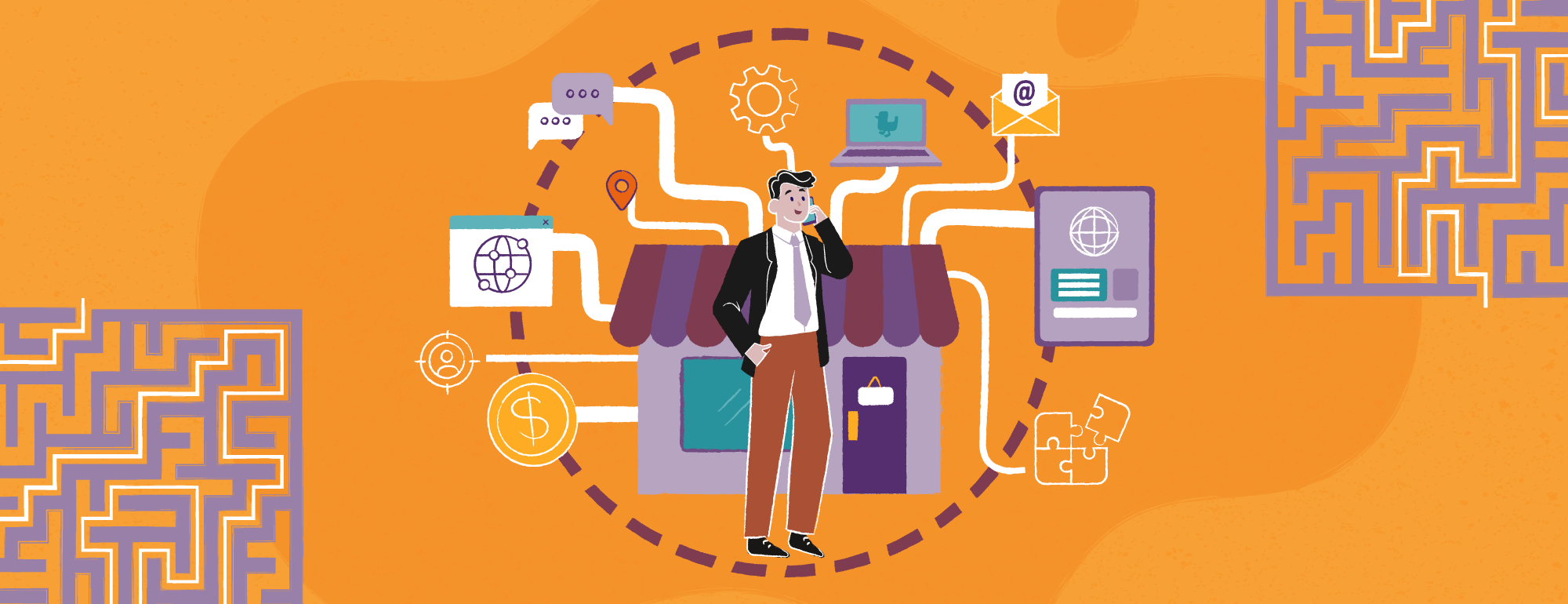Omnichannel Challenges / Overcome the Common Hurdles
The concept of omnichannel is probably well known to anyone involved in e-commerce and online sales. Unfortunately, implementing this model is not always easy and brings a number of different omnichannel challenges for retailers that make the model not always work as expected. Channels may be inefficiently integrated, processes may not all be well thought out and previously implemented technology has become insufficient.
There can be many more of these challenges in omnichannel commerce, so we’ve gathered the most common difficulties preventing omnichannel implementation and will give you tips with which to improve omnichannel sales and customer satisfaction.
Components of an Omnichannel Strategy
In one of our previous materials on omnichannel strategy, we wrote about the benefits of omnichannel retailers in this sales model and what a good omnichannel plan should look like.
As a reminder, implementing a successful omnichannel retail strategy is not an ad hoc activity, but rather a planned effort that is part of the whole puzzle that is digital transformation.

In a nutshell, an omnichannel strategy requires setting measurable goals, studying the company’s existing situation and analyzing customer preferences. It is their needs that should be the focus, since the most customers expect a great customer experience.
The Reasons Why Omnichannel Retailing Is Not Working Can Be Many and Varied
Companies operate in different industries, target different audiences, and have different levels of digital adoption. Some are starting from scratch and only planning to implement omnichannel. Others are moving from a disconnected multichannel or single channel to an omnichannel approach. Yet another group of companies is already using multiple channels and implementing omnichannel retailing, but it is not working the way it should.
The combination of challenges faced by companies implementing an omnichannel retail strategy varies widely. For ease of reference, we have grouped them into 3 categories: organizational-strategic, technological, and process challenges. We have also provided some tips on how to overcome these hurdles. So, next to each challenge, you will find tips on what to do if your company finds itself in such a situation.
Also check out our e-book on why omnichannel retail doesn’t work and how to fix it 😊.

Organizational and Strategic Challenges of Omnichannel Retailing
Some people think of omnichannel retail as simply opening various channels with the help of technology. Of course, technology is necessary to implement a successful omnichannel retailing, but it is not sufficient on its own.
One of the problems is acting without a digital strategy and a plan. Acting ad hoc, without analysis, with a “somehow it will be done” approach may seem easier, but it is not profitable in the long run.
It can end up spending huge budgets on solutions that have to be replaced after a year or two, channel conflicts or lower customer engagement.

And that is another issue – rushing to choose technology. Sometimes it is a copy of a solution picked up from a competitor or discovered at a conference. More often than not, it is the result of a rash decision or a lack of technical knowledge in the team.
The solution to that is to analyze the company’s current situation, business needs, processes (more on this in a moment), customer behavior and set measurable goals.
An equally important problem is the lack of preparation of organizations and leaders for change. If managers do not have at least a basic understanding of technology and modern customer expectations, it will be difficult for them to compete with those who follow market trends, get valuable insights from data and use it to increase customer engagement and sales growth.

It’s also crucial to onboard the employees to the omnichannel shopping project. They need to understand why omnichannel retail is essential to increase customer loyalty, increase profit margins and reduce lost sales.
Without transparent communication, training and team engagement, an omnichannel retailing project can fail.
Today’s business environment requires organizations to be agile and learn quickly. Success is not possible if employees and leaders are not continuously developing their skills, especially in the area of technology.
The Process Challenges of Omnichannel
A common barrier to implementing a successful omnichannel approach is the lack of structured processes within an organization. Not only is this inefficient from a cost perspective, but it also creates chaos in sales and marketing teams and makes it impossible to have a central source of data about customer’s journey.
Imagine that different departments/people are responsible for different sales channels or different product categories. Over the years, each department develops its own engagement strategies, data management or entire process of running marketing campaigns. They use different tools, work with different vendors, and do not collaborate with each other.
Eventually, this leads to chaos, inefficient use of company resources, and even mutual harm. It also makes it harder to get a single view of the customer across the enterprise because customer data management is not unified and centralized.
What’s more, customers don’t have a consistent experience. They may use more than one channel, and they expect a seamless shopping experience whether it is a brick and mortar store or mobile apps. Customers do not care if the physical store is managed by a different department than the online store. They expect consistent inventory visibility, messaging, or products information at every touchpoint.
So, how do you organize your business processes?
Define the Key Processes Related to Sales and Marketing in the Company
There will be many such processes, such as sales process, funnel management, product information management, orders, etc.
Determine the Status of Each Process
Have they been partially or fully described? Or is the knowledge in the heads of the employees? Is a given process consistent at the enterprise level? Are there any guidelines for a particular process?
Determine the Target State of Each Process
Now consider whether all the processes you have written down should be described in detail. Which ones should be standardized at the company, department, or perhaps product category level? What processes need to be addressed before implementing a technology solution?
The above exercise will certainly help you take a better look at how your business operates. Remember, too, that the state of your company’s processes should be compared to the customer journey and how well the processes reflect the customer’s needs. It’s not uncommon for processes to focus only on achieving the goals of the company and the teams involved, and not enough on the customer.
Technology Challenges for Omnichannel Retailers
While technology is not the only piece of the omnichannel retail business puzzle, omnichannel selling cannot happen without it. However, implementing the right technology is still a challenge. What do companies face when implementing an omnichannel retailing?
Lack of Scalability and Preparation for Future Growth
One barrier to developing new online and offline channels is the inflexible approach to building e-commerce systems. The monolithic approach to e-commerce refers to a traditional architecture in which applications are built as a unified whole. This means that both the frontend and backend are interconnected and implemented within a single system. In practice, this means that a change in a selected component can affect the operation of the entire system.
The solution is Composable Commerce, which breaks down the monolithic architecture into independent components and services (microservices). They can be combined in any configuration, customized according to business needs, and new services can be replaced and added as needed. In Composable Commerce we also mention the MACH approach, which means using microservices (M), APIs (A), cloud services (C) and the Headless Commerce approach (H)
Ineffective Integration of Channels and Systems
As you know, the omnichannel sales model requires the integration of all channels. Different channels may serve purposes and reach different customer segments. However, they should all effectively exchange information such as pricing, and inventory data and product descriptions.
What happens when omnichannel integrations are ineffective?
Orders may be processed more slowly, the customer doesn’t have a single place with a purchase history (especially important in the B2B industry), employees will have more manual work to do, and that comes with a higher risk of error.
The solution is to create an effective integration layer between systems, so that data is exchanged efficiently and automatically, without burdening internal systems. This approach also eliminates errors, reduces the need to modify domain systems, and allows customers to truly enjoy the benefits of the omnichannel model.

Scattered Data
Managing a single channel is relatively painless. Launching multiple channels requires the implementation of specific tools to quickly update content across all channels and consolidate key information in one place. Otherwise, employees will waste more time getting the latest data, analysis, and updates, and customers may feel that brand communications are inconsistent.
The solution is to implement a single source of truth (SSoT). There may be several such sources of truth in an organization because they may serve different areas: content (content management system), product information management (PIM), sales data (data lake or data warehouse), or customer data (CRM).

Legacy Systems
Legacy systems make it difficult to meet growing business needs and make integrating outdated technology with newer solutions, including those supporting the omnichannel model, challenging. Ideally, a MACH architecture should be in place, but this is not always immediately possible. Occasionally, a well-performing system is difficult to integrate with other enterprise systems, but there is not yet a business case to change.
The biggest problem with legacy systems is the lack of modern interfaces and APIs, without which business-critical platforms cannot be easily integrated. Fortunately, legacy systems can still be integrated with newer solutions and will not derail your omnichannel retail strategy.
Read one of our articles to learn how to deal with specific cases of legacy integration.
Lack of Centralized Analytics
The lack of convenient analytical tools makes it difficult to manage omnichannel marketing and sales. The company will be slow to respond to changing sales conditions, employees will waste time manually collecting data, and it will be harder to identify areas for improvement and measure progress against business goals.
Business intelligence tools can help by enabling the creation of easy-to-use dashboards, reports, tables, charts, and other interactive forms of data visualization. They allow you to integrate, process, and transform vast amounts of data from disparate sources into valuable information.
Meet the Challenges of Omnichannel Retail
The omnichannel model presents a number of challenges that companies must overcome if they are to deliver a great customer experience. Fortunately, it is possible to take a methodical approach and implement change in a structured way-assessing the current situation and needs, defining goals and priorities, and then implementing the next elements of the strategy step by step. If you’re wondering where to start changing your omnichannel model, how to streamline processes, and what technologies to use, we know someone who can help 😉.







